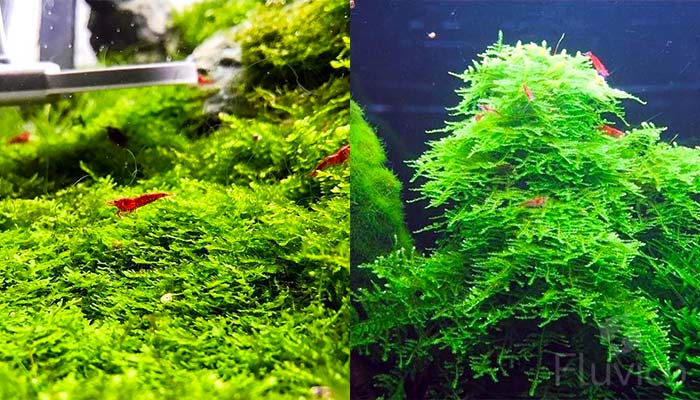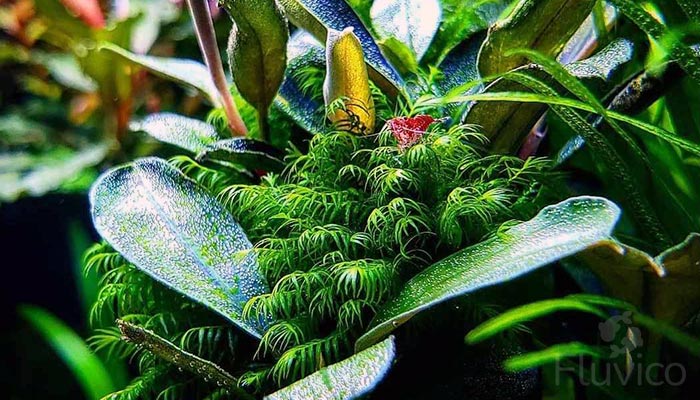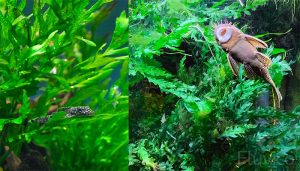Cherry Shrimp Breeding
Cherry Shrimp, small yet vibrant creatures, have gained immense popularity in the aquarium world.
Known for their vivid red colour and ease of care, they make a delightful addition to freshwater tanks. Breeding Cherry Shrimp is not only a rewarding experience for aquarists but also crucial for maintaining a healthy population in captivity.
Understanding the right techniques and conditions for breeding these shrimps can significantly enhance their health and vitality, making your aquarium a lively and colourful ecosystem.
Importance in Aquariums: Cherry Shrimp, with their striking appearance and active behaviour, add aesthetic value to aquariums. They are also beneficial in maintaining the tank’s ecosystem by feeding on algae and detritus.
Overview of Breeding Process: Breeding Cherry Shrimp involves creating optimal conditions in the aquarium, such as stable water parameters and a safe habitat.
It’s essential to understand their lifecycle, including mating, egg-carrying, and nurturing the fry, to ensure successful breeding.
Understanding Breeding Techniques: Whether you are a novice or an experienced aquarist, learning about the specific needs and behaviours of Cherry Shrimp during the breeding process is key to achieving a thriving shrimp colony.
Related: Types of Moss for Shrimp
Table of Contents

Setting Up for Cherry Shrimp Breeding
Choose a Suitable Aquarium: Selecting the right tank is fundamental for successful cherry shrimp breeding.
A 10-gallon tank is recommended, as it provides ample space for a growing shrimp colony. Consider the number of shrimp you plan to keep; typically, 5 gallons per 10-12 shrimp is ideal.
Tank Shape Considerations: A long, shallow tank is preferred, ensuring good water circulation and ample swimming space. Square or rectangular tanks are more suitable than tall, narrow ones.
Fully Cycled Tank: Before introducing shrimp, ensure the tank is fully cycled. This process establishes beneficial bacteria that convert harmful ammonia and nitrites to nitrates.
Stable Water Parameters: Cherry shrimp thrive in stable conditions. Keep the temperature between 72-78°F, pH levels at 6.5-7.5, and water hardness at 4-6 dGH.
Filtration Needs: A good filtration system, like a sponge filter, is vital. It maintains water quality without posing a threat to the shrimp.
Substrate Setup: Choose a shrimp-safe substrate, avoiding sharp or rough materials. Rinse it thoroughly to prevent water cloudiness, and create a layer 2-3 inches deep in the tank.
Plant Addition: Live plants create a natural environment and help maintain water quality. Choose species that thrive in similar conditions as cherry shrimp, like Java moss and Anubias.
Shrimp Introduction: Introduce a small group of cherry shrimp, ideally 5-10, to start the breeding process. Acclimate them carefully to the tank’s conditions to reduce stress.
Feeding: Provide a balanced diet including high-quality shrimp pellets, algae wafers, and blanched vegetables like spinach and zucchini.
Maintenance: Regularly monitor water parameters and maintain the tank to ensure a conducive environment for shrimp breeding.
Understanding Cherry Shrimp Biology
General Species Summary: Cherry shrimp, scientifically known as Neocaridina heteropoda, are vibrant freshwater invertebrates native to Taiwan.
Popular in the aquarium community, they are resilient, low-maintenance, and contribute positively to their ecosystem.
Appearance & Size: Cherry shrimp display various shades of red and grow up to 1.5 inches. Females are typically larger and more colourful, with an orange “saddle” under their tail indicating egg development.
Colour Grading: Breeders use a colour grading system ranging from high-grade Painted Fire Red to lower-grade Basic Cherry Shrimp. Higher-grade shrimp require more stable water conditions.
Physiological Considerations: Cherry shrimp are born fully developed, reaching mating size in about 2.5 months. They don’t have scales but an exoskeleton that they shed as they grow. The shrimp are peaceful and shy, showing more activity when they are the sole species in the tank.
Behavior & Temperament: Cherry shrimp are active and docile. They prefer environments with plenty of hiding spaces and exhibit brighter colors when secure. Their behavior includes grazing on tank surfaces and occasionally consuming their shed exoskeletons for nutrients.
Optimal Conditions for Breeding
Ideal Temperature and pH: The optimal temperature for breeding Cherry Shrimp is around 80 degrees Fahrenheit.
It’s important to maintain this temperature consistently, as fluctuations can impact the shrimp’s breeding ability. The ideal pH range for their habitat is between 6.5 and 7.5.
Water Cleanliness: Cherry shrimp are sensitive to water quality. Ensure the water is free from chlorine, ammonia, nitrite, and maintain nitrate levels below 20 ppm. A well-cycled tank is crucial for maintaining these parameters.
Bioload and Filtration Guidelines: Given their low bioload, Cherry Shrimp don’t produce much waste. However, a sponge filter is recommended to prevent young shrimp from being sucked into the filtration system.
Tank Setup, Size, and Habitat Suggestions: A minimum of a 5-gallon tank is suggested, with a 10-gallon tank being optimal. Cherry Shrimp thrive in a tank with a generous amount of plants, moderate current, and a rocky substrate mimicking their natural habitat.
Society Dynamics and Gender Ratios: For a well-functioning shrimp society, maintain a ratio of at least 3-4 females for every male. This ensures a stable breeding cycle and reduces competition among males.
Breeding Process and Pregnancy Stages
Inducing Breeding in Cherry Shrimp: Breeding is typically initiated once the shrimp are sexually mature, around 4-6 months old. A stable environment with proper water parameters and abundant food sources encourages breeding.
Pregnant Cherry Shrimp Stages: The pregnancy of Cherry Shrimp involves several stages, starting with egg development in the ovaries, fertilization, egg-carrying, and finally, incubation. The eggs darken as they near hatching, which occurs after about 30 days.
Breeding Cycle and Fry Care: Once the eggs hatch, the fry are miniature versions of adults and can eat the same food. Ensure the tank is free from predators and provide ample hiding spaces for the young.
Recovery After Breeding: Post-breeding, females need time to recover. Offering a balanced diet helps them regain strength and prepares them for the next breeding cycle.
Challenges in Breeding and Solutions
Why Cherry Shrimp May Not Breed: Several factors can hinder breeding, such as fluctuating water parameters, inadequate diet, lack of gender balance, immaturity of shrimp, end of lifespan, stressful environment, or disease.
Dealing with Fluctuating Water Parameters: Maintain stable temperature, pH, and hardness to prevent stress on shrimp.
Ensuring Varied Food Sources: Provide a balanced diet including algae, biofilm, and commercial shrimp food to promote health and reproductive ability.
Managing Shrimp Maturity and Lifespan: Recognize that shrimp need time to mature and their breeding ability declines with age.
Creating a Stress-Free Environment: Ensure a peaceful environment with plenty of hiding places and avoid overcrowded or aggressive tank mates.
Disease and Parasite Management: Regularly monitor for signs of illness and parasites, and maintain clean water conditions to prevent outbreaks.
Feeding and Nutrition for Cherry Shrimp
Natural Diet in Wild Habitat: Cherry Shrimp primarily feed on biofilm, algae, and decaying plant material. Replicating this diet in captivity is essential for their health.
Recommended Foods for Optimal Health: A high-quality pellet mix, along with vegetable bits like cucumber, spinach, zucchini, and lettuce, should be provided.
Feeding Schedule and Special Nutritional Needs: Feed Cherry Shrimp once daily. Increase the variety and quantity of food, especially when females are carrying eggs, to ensure they receive sufficient nutrients.
Health and Disease Management
Identifying Common Diseases: Cherry Shrimp can suffer from external and internal bacterial infections, fungal infections, and Vorticella. Symptoms can include shell discolouration, white tufts, and a white crust around the mouth.
Preventive Measures and Treatments: Use salt baths for treating infections and maintain almond leaves in the tank to reduce bacteria levels. Avoid any treatments containing copper, as it is harmful to shrimp.
Hospital Tank and Isolation Strategies: If a shrimp shows signs of illness, isolate it in a hospital tank to prevent the spread of disease and treat it individually.
Additional Tips and Facts
Unique Swimming and Feeding Behaviors: Cherry Shrimp swim backwards using their tail and can move their eyestalks independently to see in different directions.
Importance of pH Stability: Rapid pH swings can be deadly. Gradual adjustments are essential for maintaining shrimp health.
Role as Natural Scavengers: Cherry Shrimp will consume parts of deceased tank mates, helping keep the tank clean. However, they should not be mistaken as causing harm to other animals.
Tank Management: Cherry Shrimp are ideal in a single-species tank and thrive in a colony of 10 or more. They are fascinating and easy to care for, making them excellent pets for aquarists.







Leave a Comment